Artificial intelligence and classification of mature lymphoid neoplasms
Hematologists, geneticists, and clinicians came to a multidisciplinary agreement on the classification of lymphoid neoplasms that combines clinical features, histological characteristics, immunophen
[...] Read more.
Hematologists, geneticists, and clinicians came to a multidisciplinary agreement on the classification of lymphoid neoplasms that combines clinical features, histological characteristics, immunophenotype, and molecular pathology analyses. The current classification includes the World Health Organization (WHO) Classification of tumours of haematopoietic and lymphoid tissues revised 4th edition, the International Consensus Classification (ICC) of mature lymphoid neoplasms (report from the Clinical Advisory Committee 2022), and the 5th edition of the proposed WHO Classification of haematolymphoid tumours (lymphoid neoplasms, WHO-HAEM5). This article revises the recent advances in the classification of mature lymphoid neoplasms. Artificial intelligence (AI) has advanced rapidly recently, and its role in medicine is becoming more important as AI integrates computer science and datasets to make predictions or classifications based on complex input data. Summarizing previous research, it is described how several machine learning and neural networks can predict the prognosis of the patients, and classified mature B-cell neoplasms. In addition, new analysis predicted lymphoma subtypes using cell-of-origin markers that hematopathologists use in the clinical routine, including CD3, CD5, CD19, CD79A, MS4A1 (CD20), MME (CD10), BCL6, IRF4 (MUM-1), BCL2, SOX11, MNDA, and FCRL4 (IRTA1). In conclusion, although most categories are similar in both classifications, there are also conceptual differences and differences in the diagnostic criteria for some diseases. It is expected that AI will be incorporated into the lymphoma classification as another bioinformatics tool.
Joaquim Carreras ... Naoya Nakamura
Hematologists, geneticists, and clinicians came to a multidisciplinary agreement on the classification of lymphoid neoplasms that combines clinical features, histological characteristics, immunophenotype, and molecular pathology analyses. The current classification includes the World Health Organization (WHO) Classification of tumours of haematopoietic and lymphoid tissues revised 4th edition, the International Consensus Classification (ICC) of mature lymphoid neoplasms (report from the Clinical Advisory Committee 2022), and the 5th edition of the proposed WHO Classification of haematolymphoid tumours (lymphoid neoplasms, WHO-HAEM5). This article revises the recent advances in the classification of mature lymphoid neoplasms. Artificial intelligence (AI) has advanced rapidly recently, and its role in medicine is becoming more important as AI integrates computer science and datasets to make predictions or classifications based on complex input data. Summarizing previous research, it is described how several machine learning and neural networks can predict the prognosis of the patients, and classified mature B-cell neoplasms. In addition, new analysis predicted lymphoma subtypes using cell-of-origin markers that hematopathologists use in the clinical routine, including CD3, CD5, CD19, CD79A, MS4A1 (CD20), MME (CD10), BCL6, IRF4 (MUM-1), BCL2, SOX11, MNDA, and FCRL4 (IRTA1). In conclusion, although most categories are similar in both classifications, there are also conceptual differences and differences in the diagnostic criteria for some diseases. It is expected that AI will be incorporated into the lymphoma classification as another bioinformatics tool.
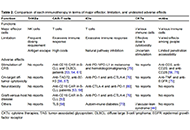 Tri-specific killer engager: unleashing multi-synergic power against cancerOpen AccessReviewCancer continues to be a global health concern, necessitating innovative solutions for treatment. Tri-specific killer engagers (TriKEs) have emerged as a promising class of immunotherapeutic agents, [...] Read more.Peeranut Winidmanokul ... Seiji OkadaPublished: April 25, 2024 Explor Target Antitumor Ther. 2024;5:432–448
Tri-specific killer engager: unleashing multi-synergic power against cancerOpen AccessReviewCancer continues to be a global health concern, necessitating innovative solutions for treatment. Tri-specific killer engagers (TriKEs) have emerged as a promising class of immunotherapeutic agents, [...] Read more.Peeranut Winidmanokul ... Seiji OkadaPublished: April 25, 2024 Explor Target Antitumor Ther. 2024;5:432–448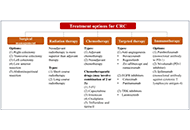 Spheroids and organoids derived from colorectal cancer as tools for in vitro drug screeningOpen AccessReviewColorectal cancer (CRC) is a heterogeneous disease. Conventional two-dimensional (2D) culture employing cell lines was developed to study the molecular properties of CRC in vitro. Although these cel [...] Read more.Sahira Syamimi Ahmad Zawawi ... Marahaini MusaPublished: April 25, 2024 Explor Target Antitumor Ther. 2024;5:409–431
Spheroids and organoids derived from colorectal cancer as tools for in vitro drug screeningOpen AccessReviewColorectal cancer (CRC) is a heterogeneous disease. Conventional two-dimensional (2D) culture employing cell lines was developed to study the molecular properties of CRC in vitro. Although these cel [...] Read more.Sahira Syamimi Ahmad Zawawi ... Marahaini MusaPublished: April 25, 2024 Explor Target Antitumor Ther. 2024;5:409–431 Cancer symptom cluster research in pediatric oncology: a work in progressOpen AccessPerspectiveIn the 21st century, advances in basic research have provided new insights in the field of pediatric oncology. Pediatric patients tend to experience higher levels of distressing symptoms, which toge [...] Read more.Luciana Chain Veronez, Luís Carlos Lopes-JúniorPublished: April 24, 2024 Explor Target Antitumor Ther. 2024;5:400–408
Cancer symptom cluster research in pediatric oncology: a work in progressOpen AccessPerspectiveIn the 21st century, advances in basic research have provided new insights in the field of pediatric oncology. Pediatric patients tend to experience higher levels of distressing symptoms, which toge [...] Read more.Luciana Chain Veronez, Luís Carlos Lopes-JúniorPublished: April 24, 2024 Explor Target Antitumor Ther. 2024;5:400–408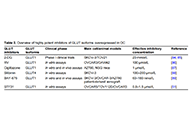 Alteration of glucose metabolism and expression of glucose transporters in ovarian cancerOpen AccessReviewAerobic glycolysis also known as the Warburg effect, remains a hallmark of various cancers, including ovarian cancer. Cancer cells undergo metabolic changes to sustain their tumorigenic properties a [...] Read more.Fatima Ben Ali ... Rabii Ameziane El HassaniPublished: April 24, 2024 Explor Target Antitumor Ther. 2024;5:384–399
Alteration of glucose metabolism and expression of glucose transporters in ovarian cancerOpen AccessReviewAerobic glycolysis also known as the Warburg effect, remains a hallmark of various cancers, including ovarian cancer. Cancer cells undergo metabolic changes to sustain their tumorigenic properties a [...] Read more.Fatima Ben Ali ... Rabii Ameziane El HassaniPublished: April 24, 2024 Explor Target Antitumor Ther. 2024;5:384–399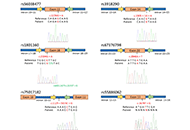 Improving single nucleotide polymorphisms genotyping accuracy for dihydropyrimidine dehydrogenase testing in pharmacogeneticsOpen AccessCase ReportFluoropyrimidines, crucial in cancer treatment, often cause toxicity concerns even at standard doses. Toxic accumulation of fluoropyrimidine metabolites, culminating in adverse effects, can stem fro [...] Read more.Annalaura Montella ... Mario CapassoPublished: April 24, 2024 Explor Target Antitumor Ther. 2024;5:374–383
Improving single nucleotide polymorphisms genotyping accuracy for dihydropyrimidine dehydrogenase testing in pharmacogeneticsOpen AccessCase ReportFluoropyrimidines, crucial in cancer treatment, often cause toxicity concerns even at standard doses. Toxic accumulation of fluoropyrimidine metabolites, culminating in adverse effects, can stem fro [...] Read more.Annalaura Montella ... Mario CapassoPublished: April 24, 2024 Explor Target Antitumor Ther. 2024;5:374–383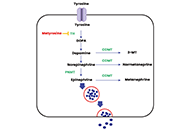 Tumor metabolism in pheochromocytomas: clinical and therapeutic implicationsOpen AccessReviewPheochromocytomas and paragangliomas (PPGLs) have emerged as one of the most common endocrine tumors. It epitomizes fascinating crossroads of genetic, metabolic, and endocrine oncology, providing a [...] Read more.Mohammad Sadiq Jeeyavudeen ... Joseph M. PappachanPublished: April 24, 2024 Explor Target Antitumor Ther. 2024;5:349–373
Tumor metabolism in pheochromocytomas: clinical and therapeutic implicationsOpen AccessReviewPheochromocytomas and paragangliomas (PPGLs) have emerged as one of the most common endocrine tumors. It epitomizes fascinating crossroads of genetic, metabolic, and endocrine oncology, providing a [...] Read more.Mohammad Sadiq Jeeyavudeen ... Joseph M. PappachanPublished: April 24, 2024 Explor Target Antitumor Ther. 2024;5:349–373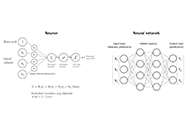 Artificial intelligence and classification of mature lymphoid neoplasmsOpen AccessPerspectiveHematologists, geneticists, and clinicians came to a multidisciplinary agreement on the classification of lymphoid neoplasms that combines clinical features, histological characteristics, immunophen [...] Read more.Joaquim Carreras ... Naoya NakamuraPublished: April 23, 2024 Explor Target Antitumor Ther. 2024;5:332–348
Artificial intelligence and classification of mature lymphoid neoplasmsOpen AccessPerspectiveHematologists, geneticists, and clinicians came to a multidisciplinary agreement on the classification of lymphoid neoplasms that combines clinical features, histological characteristics, immunophen [...] Read more.Joaquim Carreras ... Naoya NakamuraPublished: April 23, 2024 Explor Target Antitumor Ther. 2024;5:332–348 Magnetite nanoparticles: an emerging adjunctive tool for the improvement of cancer immunotherapyOpen AccessReviewCancer immunotherapy has emerged as a groundbreaking field, offering promising and transformative tools for oncological research and treatment. However, it faces several limitations, including varia [...] Read more.Phoomipat Jungcharoen ... Charupong SaengboonmeePublished: April 23, 2024 Explor Target Antitumor Ther. 2024;5:316–331
Magnetite nanoparticles: an emerging adjunctive tool for the improvement of cancer immunotherapyOpen AccessReviewCancer immunotherapy has emerged as a groundbreaking field, offering promising and transformative tools for oncological research and treatment. However, it faces several limitations, including varia [...] Read more.Phoomipat Jungcharoen ... Charupong SaengboonmeePublished: April 23, 2024 Explor Target Antitumor Ther. 2024;5:316–331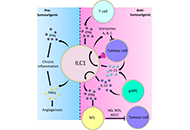 Emerging roles of type 1 innate lymphoid cells in tumour pathogenesis and cancer immunotherapyOpen AccessReviewInnate lymphoid cells (ILCs) are the most recently discovered class of innate immune cells found to have prominent roles in various human immune-related pathologies such as infection and autoimmune [...] Read more.James Michael Verner ... Eric JouPublished: April 23, 2024 Explor Target Antitumor Ther. 2024;5:296–315
Emerging roles of type 1 innate lymphoid cells in tumour pathogenesis and cancer immunotherapyOpen AccessReviewInnate lymphoid cells (ILCs) are the most recently discovered class of innate immune cells found to have prominent roles in various human immune-related pathologies such as infection and autoimmune [...] Read more.James Michael Verner ... Eric JouPublished: April 23, 2024 Explor Target Antitumor Ther. 2024;5:296–315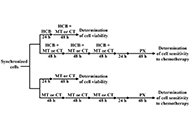 Hexachlorobenzene as a differential modulator of the conventional and metronomic chemotherapy response in triple negative breast cancer cellsOpen AccessOriginal ArticleAim: Triple negative breast cancer (TNBC) is usually treated with high doses of paclitaxel, whose effectiveness may be modulated by the action of environmental contaminants such as hexachlorobenz [...] Read more.Yamila Sanchez ... Alejandro EspañolPublished: March 21, 2024 Explor Target Antitumor Ther. 2024;5:278–295
Hexachlorobenzene as a differential modulator of the conventional and metronomic chemotherapy response in triple negative breast cancer cellsOpen AccessOriginal ArticleAim: Triple negative breast cancer (TNBC) is usually treated with high doses of paclitaxel, whose effectiveness may be modulated by the action of environmental contaminants such as hexachlorobenz [...] Read more.Yamila Sanchez ... Alejandro EspañolPublished: March 21, 2024 Explor Target Antitumor Ther. 2024;5:278–295